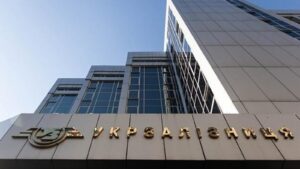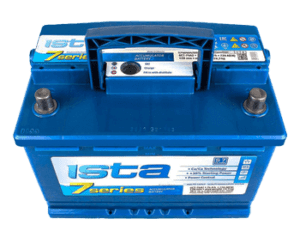
Ukrzaliznytsia JSC (UZ) paid the coupon payment on its 2026 Eurobonds due on July 9 in full and on time, said Oleksandr Pertsovsky, Chairman of the Board of the company.
On the sidelines of the panel discussion “No Security – No Recovery” organized by the Pinchuk Foundation and YES on the sidelines of URC2025, he emphasized that the company was fulfilling its obligations despite the deterioration in liquidity.
The day before, UZ announced that it would pay coupons due on July 9 and 15 on its Eurobonds maturing in 2026 and 2028, respectively, although in Q1 2025, EBITDA reached negative territory due to a drop in cargo volumes (-17% year-on-year compared to Q1 2024) and a rapid increase in operating expenses.
“Since the beginning of the year, available cash has decreased significantly, increasing the need for financing from international financial institutions to cover critical capital investments and liquidity needs during the ongoing war,” the press service said.
“Without such support from strategic partners, the company would likely not have been able to fulfill its financial obligations to Eurobond holders,” the press release said.
In addition, it was noted that Ukrzaliznytsia has engaged a financial advisor and is seeking a solution to its Eurobonds through negotiations with the Eurobond holders in order to achieve appropriate debt relief and mitigate liquidity challenges in the coming years.
In January 2025, Ukrzaliznytsia capitalized the postponed coupon payments on the 8.25% Eurobonds 2026 in the amount of $108.28 million and the 7.875% Eurobonds 2028 in the amount of $51.9 million as a result of the restructuring in 2022.

At the same time, only a quarter of state-owned companies submit financial statements to the State Statistics Service

Almost 800 state and state-owned companies submitted financial statements in 2023, according to the State Statistics Service. Every year, 40% of these companies are unprofitable. It is worth noting that only a quarter of public sector companies comply with the law and submit their financial statements to the State Statistics Service.
789 state and state-owned enterprises submitted financial reports in 2023. This is only a quarter of all state-owned companies in Ukraine in 2024. Only 475 companies reported on their financial success in 2021.
“In contrast to private business, state-owned enterprises have significant advantages – in addition to being state-owned, such companies are often monopolists. That is, if managed properly, they have every opportunity to be even more profitable than private businesses.
However, according to the State Statistics Service’s financial statements, almost half of SOEs are unprofitable even under such conditions. We have created the Register of State-Owned Companies to make it easier to compare their financial performance and see which state-owned property is working as inefficiently as possible,” comments Oleksiy Ivankin, Head of the Open Data Base.
“We monitor the efficiency of state-owned enterprises on the page Register of State-Owned Enterprises.
On average, 40% of state-owned enterprises that have submitted reports are unprofitable. For example, last year, out of 789 companies, 313 suffered losses (39.7%), and in 2022, out of 797 companies, 389 were unprofitable. In 2021, 30.9% of those who reported their financial situation were unprofitable.
Boryspil Airport suffered the largest losses last year, amounting to UAH 1.4 billion. Dobropilliavuhillya-Vydobutok is the leader in terms of loss growth, which increased almost 12 times, from UAH 122 million to almost UAH 1.4 billion over the year.
Despite a significant number of loss-making companies, there are also those that are increasing their turnover. For example, Ukrspetsexport’s turnover grew by almost a third over the year, to UAH 32 billion. And Pavlohrad Chemical Plant has increased its turnover by 2.6 times to UAH 8.2 billion since the start of the full-scale war.
Despite the high turnover, the leaders in terms of profit are completely different enterprises. The most profitable state-owned enterprise in the country is the Forests of Ukraine, with UAH 2.8 billion. The Chornomorsk trade port demonstrated the largest increase in profits: its profits increased 26 times over the year, from UAH 37.2 million to UAH 986 million.
https://opendatabot.ua/analytics/state-companies-2024

During the war, direct and indirect losses of the agricultural sector reached $40.2 billion, but these are not the final figures, as Ukrainian territories are still under temporary occupation, so it is difficult to calculate the full extent of losses, said Oleksandr Haidu, chairman of the Verkhovna Rada Committee on Agrarian and Land Policy.
“Confirmed direct losses of the agricultural sector exceeded $8.7 billion. We are talking about the destruction of infrastructure, business facilities, logistics chains, destruction and theft of grain and agricultural machinery by the enemy. There are also indirect losses of at least $30.5 billion. Unfortunately, this is not the final figure. When we accurately calculate the damage caused by the enemy’s explosion of the Kakhovka hydroelectric power station, the amount will be much higher,” the MP said on Wednesday at the conference “18 Months of War. Damage to the agricultural sector and prospects for the industry’s recovery”.
According to him, it is difficult to assess the consequences of contamination of agricultural land with explosives, destruction of the upper layers of soil due to “arrivals” and explosions during demining.
“We see that a large area is mined. Potentially, 174 thousand square kilometers of Ukrainian land are contaminated with explosives. And this is without taking into account the temporarily occupied regions,” the MP noted and informed about the preparation of the draft law “On the Quality of Soils”.
Gaidu also emphasized that the state cannot cover the needs of the affected farmers on its own and promised to engage international partners to support the agricultural sector.
“I emphasized the expediency of differentiating programs for farmers. After all, the needs of farmers are very different. For example, those farms that operate in the de-occupied territories cannot attract investment because financial institutions are mostly unwilling to cooperate with them. Although they are the first to return to their places after the liberation of the region to resume their activities and fill local budgets,” he wrote on Facebook.
The chairman of the relevant parliamentary committee believes that one of the mechanisms for compensation for the damage could be “grain reparations,” a mechanism that would help farmers receive compensation for destroyed businesses.

Sabotage by Russian inspectors in the Joint Coordination Center (JCC) of inspections of vessels bound for the Ukrainian Black Sea ports leads to low efficiency of their inspection – about 70 grain carriers piled up for a week to enter the “grain” corridor, and 30 – to leave.
According to the broker company Spike Brokers (Kiev) in Telegram-channel, grain traders are forced to lay more and more costs for demurrage of ships (up to 30 days) in the price of agricultural products, which “kills” the benefits for agricultural producers. Because of this, farmers are actively exporting their goods by land, strengthening trade relations with end consumers in Europe.
According to a brokerage company, for the past week, it has made deals for December-February delivery of feed wheat from Ukraine to Poland for $237/ton, rapeseed (non-GMO) to Germany – €595/ton, soybeans (GMO) to Ukrainian deep-sea ports – $415/ton. No data on sunflower sales have been made public this week.
She specified that domestic corn prices have stabilized at $205-230, depending on the place of delivery – in the port or to the land border crossings. Exchange quotations for wheat this week are in the nature of an “inversion” (a reverse market where spot is more expensive than contracts for future months). Recent buyer indications for the past week are DAP Poland (border) $210-220, DAP Turkey (port) $260-270, DAP Romania (port) $255-265.
“The proximity of the holiday month creates some constraints on the efficiency of cargo handling in Europe. Most buyers in Europe do not want to receive shipments by truck/rail between December 20 and January 5. In the direction of ports, buyer demand is expected to decline significantly until vessel throughput efficiency improves,” Spike Brokers stressed in a statement.
In turn, with low selling prices of wheat in Ukraine and the high cost of its logistics, domestic producers are suffering significant losses, which significantly constrains its supply. The latest indications of buyers: DAP Poland (border) – $230-245, DAP Hungary (border) – $230-242, DAP Ukraine (Danube ports) – $240-245.
According to the trader, the purchasing prices of oil extraction plants in Ukraine adjusted from $450 to $350 excluding VAT per ton of sunflower seed delivered to the plant: the saturation of demand in Ukraine occurs against the background of the fall in vegetable oil prices to $ 200 per ton. Thus, while oil prices on foreign markets will remain stable, there will be an increase in the supply of sunflower for export.
The latest indications of sunflower seed buyers: DAP Bulgaria (center) – $540-560, DAP Romania (center) – $500-530, DAP Hungary (center) – $540-555.
In addition, the saturation of the EU market with rapeseed from Ukraine and Eastern European countries does not give any chance for price strengthening at the moment. Latest buyer indications: DAP Germany (east) – €550-560, DAP Hungary (center) – €540-550.
“The soybean market remains at last week’s levels. Producers remain with good soybean balances for sale,” the brokerage clarified.
The latest soybean buyer indications for the week: non-GMO DAP Italy – €545-550, GMO DAP Italy (south) – €545-550.
A representative of the trading department of A.G.R. Agroholding. Group in a survey by Interfax-Ukraine agency noted that since the beginning of Russian military aggression, the logistical leverage for agricultural exports from Ukraine has increased, freight prices have risen, energy and fuel prices have risen. As a result, the group is forced to spend about $200 per ton of exports, a huge amount of money compared to the prewar $45-50 per ton.
“With the start of the war, we changed our crop rotation and switched to oilseed crops as much as possible – that’s more than 60% of our crops this year. Corn is a comfortable crop, but energy-intensive, and with the price of energy, gas, it’s just not profitable to work with. As a result, we have reduced the volume of its sowing and to a greater extent switched to oilseeds, thereby reducing the burden on the railway and road transport and combine maintenance costs, “- said the interlocutor of the agency.

Ista Center (Dnipro), a producer of starter batteries, intends to use its net profit for 2021 in the amount of 154.85 mln hryvnia to cover the losses of the previous periods.
According to the draft decision of the general meeting of the company shareholders, scheduled for December 26, published in the NKTSBM disclosure system, Ista-Center does not plan to accrue and pay dividends.
According to the company’s information, net profit per one common share in 2021 was UAH 60.4 mln, whereas a year earlier it amounted to almost UAH 2.9 mln. Net profit in 2020 was 7.37 million hryvnias.
As of January 1, 2022, the company had retained earnings of 12.81 million hryvnias against an uncovered loss of 143.25 million hryvnias on the same date in 2021.
The shareholders also plan to approve the reports of the management bodies at the meeting, approve the main directions of development for 2022 and re-elect the supervisory board.
“Ista-Center”, operating since 1995, is one of the plants producing starter batteries in Dnipro (the other is DOZ “Energoavtomatika”).
According to the latest financial statement of the company, which was made public by the NCSSM, its net income in 2020 was 206.6 million hryvnias. By the beginning of 2021, the plant employed 135 people.
According to the NCSSM, as of the fourth quarter of 2021, Oberon-Center LLC (Dnipro) owns 40% of the shares in which, according to Opendatabot, over 75% belongs to Scotwind Limited, whose beneficiary is named Oleg Zimin; 23.0476% is owned by Battery Investment Corp. registered in Panama and 6.23% belongs to the Ista International Corporation (Belize).
Another 21.55% is owned by the state. As reported, the Ista Center was included in the list of facilities transferred by the Cabinet of Ministers to the State Property Fund for privatization, which was made public in August 2022.

PrJSC Pokrovsky Mining and Processing Plant (PGOK, Dnipropetrovsk region) in January-June of this year saw a net loss of UAH 37.438 million compared to a net profit of UAH 55.980 million a year earlier.
According to the company’s interim report published in the information disclosure system of the National Securities and Stock Market Commission, over this period its net income decreased by 45.3%, to UAH 828.048 million.
Retained earnings by the end of June this year reached UAH 1.366 billion.
Pokrovsky Mining and Processing Plant is the largest producer of manganese ore in Ukraine, which is mining it in an open way.
Four Cypriot companies, namely Profetis Enterprises Limited, Exceed Investmens Limited, Clemente Enterprises Limited and Alexton Holdings Limited own 24.3024% of the shares of the company
The charter capital of the plant is UAH 736.134 million, the par value of the share is UAH 0.25.